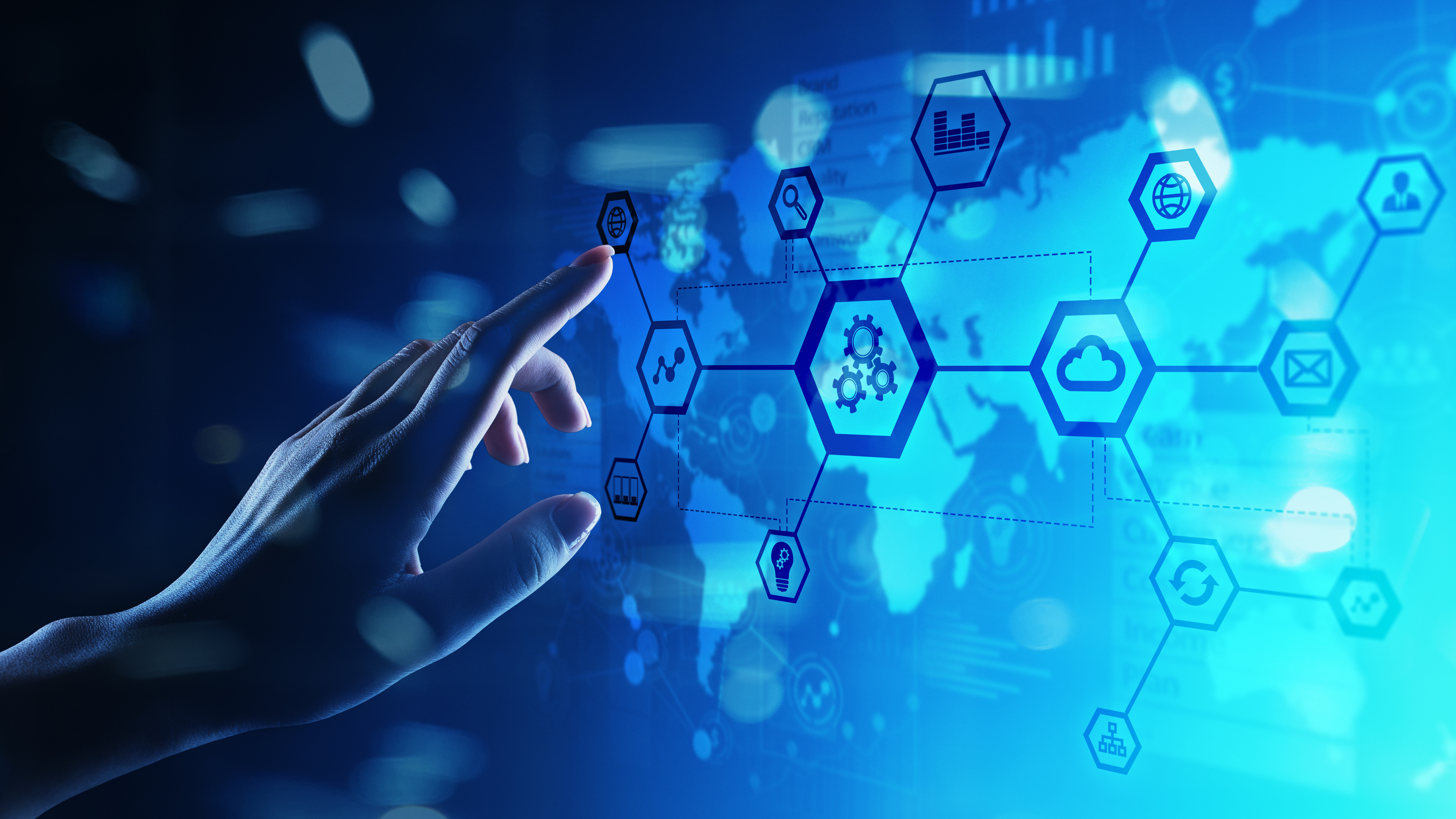
29 Oct Trends in Industrial Automation Technology
Today’s innovations in industrial automation are largely focused on interconnectivity. Powerful new technologies provide industry professionals with unprecedented abilities to “see” what is happening and respond in real-time. New tech is being developed for training, to bridge the skills gap and provide you with the knowledgeable workforce you need. And artificial intelligence is improving everything from preventive maintenance to cybersecurity. These advanced technologies rely upon well-designed infrastructure and progressive leadership.
“To be successful in today’s climate, modern manufacturers must embrace the ongoing shifts in technology and adapt in real-time to fight back the growing number of more agile and digitally empowered competitors.” —Ruban Phukan on Manufacturing Automation
Now we’ll take a look at the most influential trends in industrial automation and describe how they impact industry today.
5G boosts interconnectivity
5G is taking the world by storm with lightning fast download speeds (around 1G/second) and a broadening reach thanks to the expanding infrastructure of satellites, cell towers and micro cells. Technology that was at one point location-dependent is soon to be available to more remote areas. This is especially important to rural areas, where healthcare and agricultural advancements have sometimes been hampered by poor connectivity. Companies like NAI are helping to create the equipment needed to maximize the possibilities that 5G brings to rural communities.
5G also impacts industry decisions and problem-solving, as it enables faster downloads and more reliable connectivity.
Industrial Internet of Things, An Essential Industrial Automation Technology
The Industrial Internet of Things (IIoT) refers to the interconnectivity of devices, and it is becoming increasingly relevant in all industries. Advancements in sensors and interconnects enable objects to send communications to users without them having to be onsite. And devices can operate on internet- and GPS-connectivity to inform their behavior. The IIoT has become essential for the agricultural industry, for example, as they rely on GPS to guide their tractors and imbedded sensors to remotely inform farmers of everything from fuel to harvest quantities. Other examples of agricultural applications include sensors in wind turbines and drones for gathering data.
Artificial intelligence
Artificial intelligence (AI) is transforming every area of technology. Industry professionals are using AI to predict problems with their equipment, allowing them to more effectively stay on the preventive side of maintenance and repair. AI can also be used to test out possible solutions and come to an informed decision at very low costs and without risking damage to machinery or personnel. Additionally, AI is being used to analyze big data to make decisions based on the behavior of millions of potential customers.
Cybersecurity concerns
All this interconnectedness presents a new set of dangers for companies relying on data collection and analysis. Machines relying upon GPS, for example, are susceptible to the jamming or other tampering of GPS signals. Security breaches among even the most well-resourced and well-known companies are common. With greater interconnectivity comes greater vulnerability to those who would seek to interrupt production or steal information. Some of the most advanced cybersecurity uses what’s called Wave-3 or Third-Wave AI, staying ahead of the game played by cyber attackers.
Asset management by OEMs
The IIoT enables original equipment manufacturers (OEMs) to service and maintain their equipment remotely. In a world where tech is developing faster than the workforce is able to be trained, having OEMs take care of their own equipment is a dream come true for many industry professionals. In some cases, the equipment is effectively rented from the OEM. In other cases, when the assets are purchased by the company using them, the user pays a subscription to have the OEM provide monitoring, maintenance and repair.
While this approach of outsourcing asset management to the OEMs, some voices caution that OEMs may focus too much on risk management for their company’s sake and not focus enough on maximizing the asset for the user.
Bridging the skills gap with new training tech for Industrial Automation Technology
All these new capabilities offered by 21st-century tech create new needs for a highly skilled workforce. Bridging the skills gap means training must be faster and more intuitive than ever. Several new technologies are forming around these needs:
Using a tablet or a pair of (very special) safety glasses, users see an overlay “augmenting” their natural sight. Details relevant to what they’re currently looking at become visible on the screen, so the user is getting pertinent data very quickly.
Virtual reality enables effective training with a 3D, immersive experience. This is especially useful for industry professionals when the situations for which personnel are being trained are difficult, costly, or dangerous to access. (Think space stations, nuclear power plants, and production facilities where stopping production for training would be costly.)
Digital twins are used for a wide variety of training, from guiding expert personnel in repairs to training robots through AI and machine learning. It’s like an extremely advanced manual, but the diagrams are 3D and include information about what’s going on with the equipment in the moment.
Providing reliable equipment to power connectivity
Other emerging technologies include edge and cloud connectivity, which keep managers abreast of the status of their production in real-time. This requires powerful servers and highly-integrated tech. In addition, blockchain technology enables producers to keep a clear and static log of their transactions or uses of an item. Digital transformation in all its forms is set to be the focus for the foreseeable future.
Implementing these tech advancements in your company requires not only the intellectual knowledge but also the infrastructure to support your tech. NAI provides custom cable assemblies and cable harnesses to power, communicate and share data from your specialized tech, as well as with sensors, control panels and more. They’ve been able to keep up with the tech advancements developed over the past several decades, and they have the personnel and production facilities to keep up with the advancements you want to implement today.

